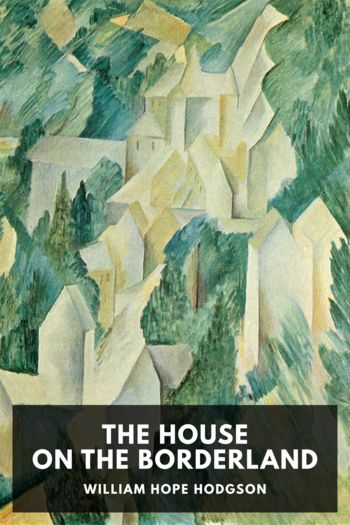Gluck by Diana Souhami (most interesting books to read .TXT) 📗

- Author: Diana Souhami
Book online «Gluck by Diana Souhami (most interesting books to read .TXT) 📗». Author Diana Souhami
But after seventeen years of correspondence and experimentation his patience snapped. He felt he could not satisfy her and advised her to get her materials elsewhere.
The matter might have drifted to a close, leaving Gluck disconsolate and dissatisfied, had not the two colourmen, Tom Rowney of Rowney & Son and Victor Harley of Winsor & Newton, met by chance at the opera in November 1967. A programme note on the composer Christoph Willibald Gluck prompted them to talk of the ‘suede effect’ and their most exigent and uncompromising customer. They agreed that after years of corresponding with her on the morality of mass production, the technical composition and purity of paint, methods of research and the availability and economic considerations of raw materials, they would try to provide her with perfect paints, which were right for her and which she felt to be pure, no matter what experimentation might prove.
A month later Tom Rowney went down to the Chantry House with his chief chemist, Mr Chalk and talked to her of their plans. ‘… Mr Chalk is very busy indeed in the laboratory’, he wrote to her (14 December 1967) after their visit. ‘From all appearances he has given up everything else and is settling down almost exclusively to your work. You have certainly done something to him, I wonder what it is! I know he enjoyed his visit to you very much indeed.’
What Mr Chalk was doing was grinding pigments by hand, on a granite slab, and mixing them with Wilson’s cold-pressed linseed oil to make Gluck’s perfect palette. For months he experimented with relative quantities of oil and pigment and varied grinding times of different pigments. Lump yellow ochre, mixed with cold-pressed oil at a relative weight ratio of seventy to thirty, was ground for two hours. Genuine Vermilion, mixed at a ratio of eight-five grams of pigment to fifteen of oil, was left for five hours on the slab with periodical grinding. Crimson Madder was mixed with oil at a fifty to fifty ratio, ground for between one and two hours, then left over-night and a further ten parts of coldpressed linseed oil added the next day. Lump Viridian, at a ratio of sixty to forty, was ground for three hours on the slab, left overnight and ground for a further half hour in the morning. French Ultramine turned out stringy and sticky whatever the proportions, or techniques of grinding, so Mr Chalk scouted around for Lapis Lazuli to make a few tubes for her.
Tom Rowney provided her with these specialist hand-made paints, free of charge, from 1967 until her death some ten years later. It would have been economically impossible to produce them in a commercial range. The final formulation for each colour involved variations in hand-grinding, modifications with driers, different proportions of either cold-pressed linseed oil or sun-thickened cold-pressed linseed oil, and the juggling with synthetic and traditional pigments. They were paints beyond price and hers alone.
Tom Rowney also invited her to go into Rowney’s shop in Percy Street, London, and choose, without regard to cost, whatever range she wanted of their best Sable brushes. He supplied her with quantities of Special Belgium Claessens canvas No. 706 primed in the traditional way. The canvas was strained in a vertical position then a coat of glue size applied with large sponges. The next day a first coat of white lead primer was applied by brush, followed a week later by a second coat. ‘… It is difficult to find words in which to thank you and Mr Chalk,’ she told him. ‘… So many lost pictures throughout these terrible wasted years, and at last a chance to make up not only some of the loss of pictures, but of health and happiness.’
She made many trips down to the firm’s laboratories in Bracknell, Berkshire, and was treated like a lord. Tom Rowney and Mr Chalk lunched at the Chantry, admired her paintings, looked at her individual researches into the behaviour of paint and exchanged their personal news with her. By the end of her fight, when she was on the frail side but no less forceful about her cause, the colourmen spared neither time, money nor effort in trying to please her.
She admitted, when her battle was more or less won, that she had wasted many creative years with this fight. Nor was this the only practical issue that she turned into a grand campaign with a moral imperative to defend. She was known in Steyning for her fervent battles over local issues – against the closing of the railway station, or to preserve the rights of way of a footpath. Her sense of injustice and moral outrage and her readiness for combat, were seldom dormant for long. She never intended the paint war to consume her time, money and energy in quite the way it did. The rage she channelled into it belonged more truthfully elsewhere. It was as if, having not got her way over certain fundamental issues of the heart, she was determined to have her way over this. Or, more painfully, having felt so betrayed by her love for a woman, self-love, which was work, must betray her too.
Gluck was a traditionalist. Her experience of paints made in the oldfashioned way led her to prefer them. The old masters ground their pigments by hand and used cold-pressed linseed oil, and that was how she defined quality. But she also selected evidence to substantiate her own theories. The problems she felt so strongly had to be universal. Those who loved her regretted the time she poured into her paint war and saw it as





Comments (0)